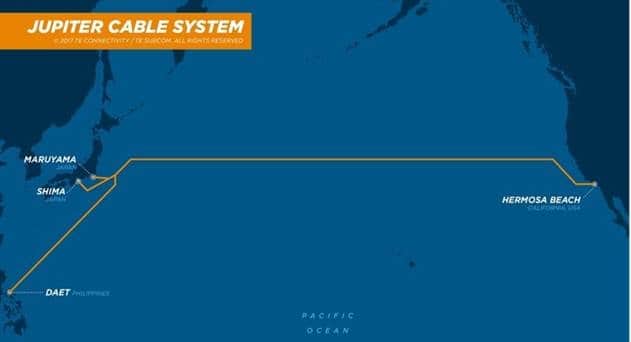NTT Com announced that as part of a consortium comprising SoftBank, Facebook, Amazon, PLDT and PCCW Global, it signed an agreement to participate in the construction and maintenance of the JUPITER large-capacity low-latency optical submarine cable between Asia and the United States.
The JUPITER cable system will have a total length of 14,000km connecting Japan, the U.S. and the Philippines, and an initial design capacity of 60Tbps. It will have two landing points in Japan—the Shima Landing Station in Mie Prefecture and the Maruyama Landing Station in Chiba Prefecture—as well as a U.S. landing station in Los Angeles, California and the Daet Cable Landing Station in the Philippines.
JUPITER will feature a state-of-the-art submersible ROADM (reconfigurable optical add-drop multiplexer) employing WSS (wavelength selective switch) for a gridless and flexible bandwidth configuration. JUPITER is expected to launch in early 2020 with an initial design capacity of 60Tbps, which will be expanded later to meet rising data demands and complement existing cable systems.
JUPITER will be a 400Gbps wavelength-division multiplex (WDM) transmission system deploying the latest fiber and design technologies as the fastest cable between Japan and the United States. It will be capable of transmitting a six-hour high-definition video (about three movies) in one second, claims NTT Com.
To meet the growing demands for traffic, including internet, cloud services and coming 5G wireless communications, NTT Com is steadily expanding its cable capacity in Asia and the Trans-Pacific, including by connecting multiple cable systems to its own data centers and enhancing cable redundancy, to offer highly reliable global network services.
At the same time, NTT Com said it will further support the business-expansion initiatives of customers by merging its data center, cloud and network services.




















